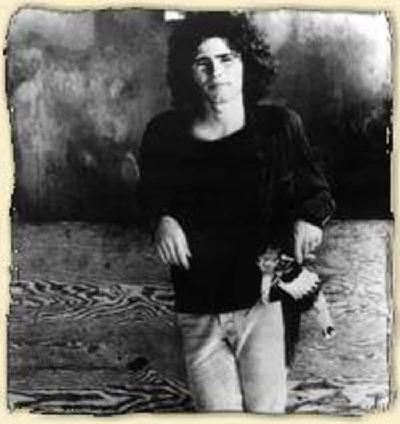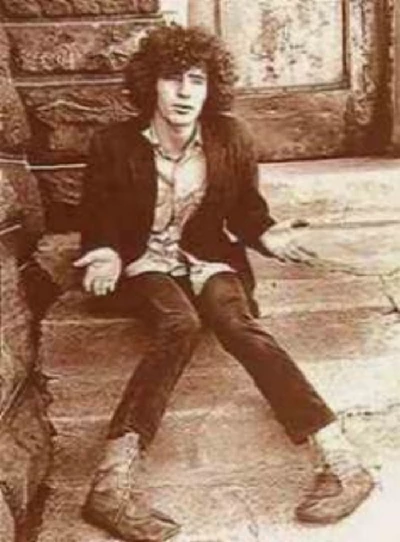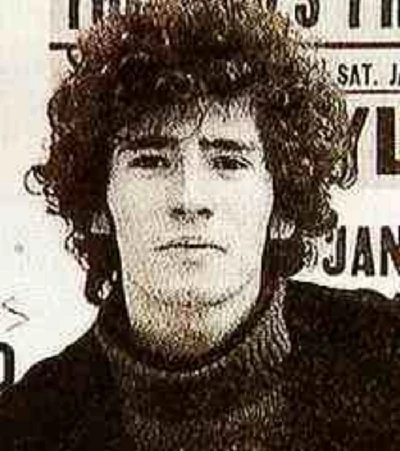published: 7 /
1 /
2005

It is thirty years since Tim Buckley died from a combination of alcohol and heroin. Mark Rowland profiles and reexamines the career of the legendary folk artist
Article
There isn’t much you can say about Tim Buckley that hasn’t already been said at some point. There have been countless articles and books written about his life and music. Interest in Tim seems to wax and wane with each coming year, though it is doubtful now that he will ever be as popular as Jeff Buckley, his estranged son. Many music fans know his music first-hand or through Jeff. I am one of the latter. When I first heard Tim’s music, I wasn’t sure what to make of him. One of the first songs I heard was the track ‘Starsailor’, probably one of the strangest tracks he ever released, which didn’t really help me warm to him, especially as I was naively expecting a folkier version of the younger Buckley.
Since then, however, I have got more and more into the music of Tim Buckley. Well, some of it. While some of his music is fantastic, there is a chunk of it that sounds dated, cheesy or compromised. The period of his career that strikes a particular chord with me is between ‘Happy/sad’ and ‘Starsailor’ and I know I am not alone in this. Listening to new folk types like Devendra Banhart and Entrance, Tim Buckley’s mark is more than apparent. There is an arty, experimental side to them that you wouldn’t necessarily find in traditional folk influences. Well known artists also wear their Tim Buckley influences on their sleeves – Starsailor even use the same font for their name as Tim used on the cover of his ‘Starsailor’ album.
The albums Tim released between 1969 and 1971 – ‘Blue Afternoon’ and ‘Lorca’ as well as the aforementioned ‘Happy/sad’ and ‘Starsailor’ sound totally timeless. The styles of the albums switch between avant-garde free jazz and the kind of folk-jazz hybrid that would emerge on Joni Mitchell’s late 70s albums like ‘Hejira’. Some of it takes a couple of listens, but pretty much all of it is rewarding.
When rock stars die, they seem to instantly gain a kind of perfect legend status in the media. Tim is no exception, frequently painted as some kind of misunderstood, troubled artist. The truth is he didn’t do himself any favours. Although he created some unique and beautiful music, he constantly tried to alienate his audience. According to many who knew him, he was convinced that if people liked the music he was making, it wasn’t any good. As a result, his albums became more and more abstract and demanding.
That said, even his most avant-garde albums couldn’t quite escape from conventional song structures – ‘Lorca’ starts off with two incredibly long improvisational pieces. After that, the songs sound like extended versions of three or four minute songs. Apart from the title track and a couple of others, ‘Starsailor’ has some pretty structured tracks, the best (‘Monterey’, ‘Down by the Borderline’) sounding like Led Zeppelin if they developed a Miles Davis fixation.
At the time, hardly anyone liked the direction that Tim’s music was going in. His manager, Herb Cohen, hated the jazz influenced material, calling it “yodelling shit”. Most of his fans also turned their backs on him, especially as he refused to play any of his old songs. At one show, a fan yelled out: “Why don’t you play ‘Buzzin’ Fly’?” Tim snapped back: “Why don’t I just play horseshit!?”
This left him in a desperate financial situation. Eventually, he gave into pressure from his bosses and agreed to take a more commercial direction. The result was 1972's ‘Greetings from LA’ a record that took on rock and funk influences. Although some tracks on the album are reasonable, the vast majority soundslike bad Stones songs. What was unique about the album at the time was the overtly sexual lyrics, which meant the album also didn’t sell as much copies as everyone hoped.
Tim said of the album in an interview in that year: “! I don't see it as a compromise. It's just part of my life having to do something like that and doing it the best that I could. You always try to do the best you can do, right?”
He also described it as a “ball and chain on the old brain”. He did not see it as a creative challenge, rather as a job to help pay the bills and support his family (his wife Judy and her son Taylor. Tim had very little contact with his first wife, Mary Guibert, or their son Jeff). Unfortunately, he never got to move his music into a new direction. After two pretty terrible albums, ‘Sefronia’(1973) and ‘Look at the Fool’(1974), Tim died after taking a combination of alcohol and heroin in 1975. Some say that it killed him because he had cleaned himself up and wasn’t able to take the amount of heroin he did. Others say that it was inevitable because of the way he lived his life. Either way, he lost his life. Ironically, he managed to achieve what he wanted – to be acknowledged in death as a true artist and innovator. I’ll end this article with a quote from Tim from the same interview from 1972 – a perfect summary of how he worked:
“The only thing worth doing in moderation is fame because it's such a bullshit trap. If you're famous you have to play a lot of places all year. You live in a lot of hotels. You have no family. You have a lot of empty relationships with women which you can't fulfill because you're only one day in each place. Fame is really a trap unless it's done in moderation. With drinking or sex you can forget about moderation, but anyone who is creative is chained to fame. It's terrible.
“I haven't deliberately avoided fame. It's just that I'm too odd for the white middle-class. But I'm happy. I get to create. There's nobody like me so they've got to keep me around.”
Band Links:-
http://www.timbuckley.com/
https://en.wikipedia.org/wiki/Tim_Buck
Picture Gallery:-



